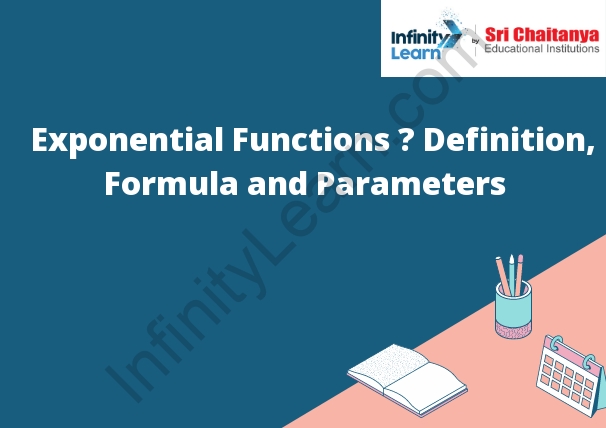Table of Contents
What is Exponential Function?
An exponential function is a mathematical function in which the independent variable is in the form of an exponent. The most common form of an exponential function is y = a x
In this equation, a is the base and x is the exponent. The value of y will increase exponentially as the value of x increases.

Exponential Function Formula
The exponential function formula is a mathematical equation that describes the relationship between two variables, typically the x and y coordinates of points on a graph. The equation is y = ax^b, where a and b are constants. This equation can be used to model population growth, radioactive decay, or any other phenomenon that follows an exponential pattern.
Exponential Growth
The exponential growth of a population or quantity can be described by a mathematical equation in which the population or quantity is represented by the letter P, and the percentage growth rate is represented by the letter r. The equation is written as P = P 0 ert, where P 0 is the initial population or quantity, r is the percentage growth rate, and t is the number of time periods over which the growth is calculated.
For example, if a population of 100 bacteria doubles every hour, the equation would be P = 100e2t. This equation would predict that the population would reach 10,000 bacteria in 10 hours.
Exponential Decay
An exponential decay equation is a mathematical equation that describes how a quantity decreases over time. The equation is written in the form
,
where is the quantity at time , is the initial quantity, and is the decay constant.
The decay constant is a measure of how quickly the quantity decreases. It is equal to the inverse of the time constant, which is the amount of time it takes for the quantity to decrease by half.
Overview of Exponential Function
The exponential function is a mathematical function that describes a relationship between two variables, usually x and y, where the y value is a result of repeated multiplication of x by a fixed number, called the base. The exponential function is written as y = bx, where b is the base and x is the exponent.
The exponential function is used in many real-world applications, such as compound interest, population growth, and radioactive decay. It can also be used to model other mathematical relationships, such as the growth of a bacterial population over time.
Parameters of the Exponential Function
The exponential function is a function that is defined by the equation y = bx, where b is a positive number and x is the input variable. The exponential function is also referred to as the ex function.
The exponential function has the following properties:
1. The exponential function is an increasing function.
2. The exponential function is a monotonic function.
3. The exponential function is a continuous function.
4. The exponential function is a differentiable function.
5. The exponential function is a periodic function.
Properties of Exponential Functions
1. The exponential function is continuous.
2. The exponential function is one-to-one.
3. The exponential function is strictly increasing.
4. The exponential function is asymptotic to the y-axis.
5. The exponential function has a unique inverse function.
Examples of Exponential Functions-
1. y=2x
2. y=3x
3. y=5x
4. y=10x
5. y=100x
Questions to be solved:
1. What is the capacitance of a parallel plate capacitor with a dielectric of thickness d and permittivity εr?
2. What is the capacitance of a parallel plate capacitor with a dielectric of thickness d and permittivity εr if the plates are spaced a distance of d/2 apart?
3. What is the capacitance of a parallel plate capacitor with a dielectric of thickness d and permittivity εr if the plates are spaced a distance of d apart?
1. The capacitance of a parallel plate capacitor with a dielectric of thickness d and permittivity εr is:
C = ε0εrA/d
2. The capacitance of a parallel plate capacitor with a dielectric of thickness d and permittivity εr if the plates are spaced a distance of d/2 apart is:
C = ε0εrA/d
3. The capacitance of a parallel plate capacitor with a dielectric of thickness d and permittivity εr if the plates are spaced a distance of d apart is:
C = ε0εrA









